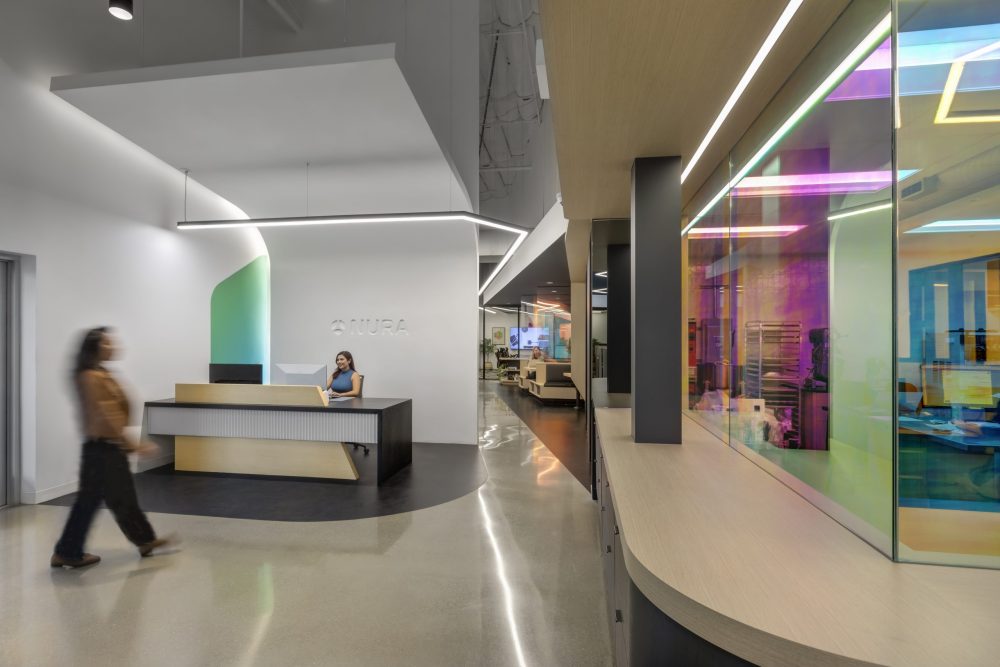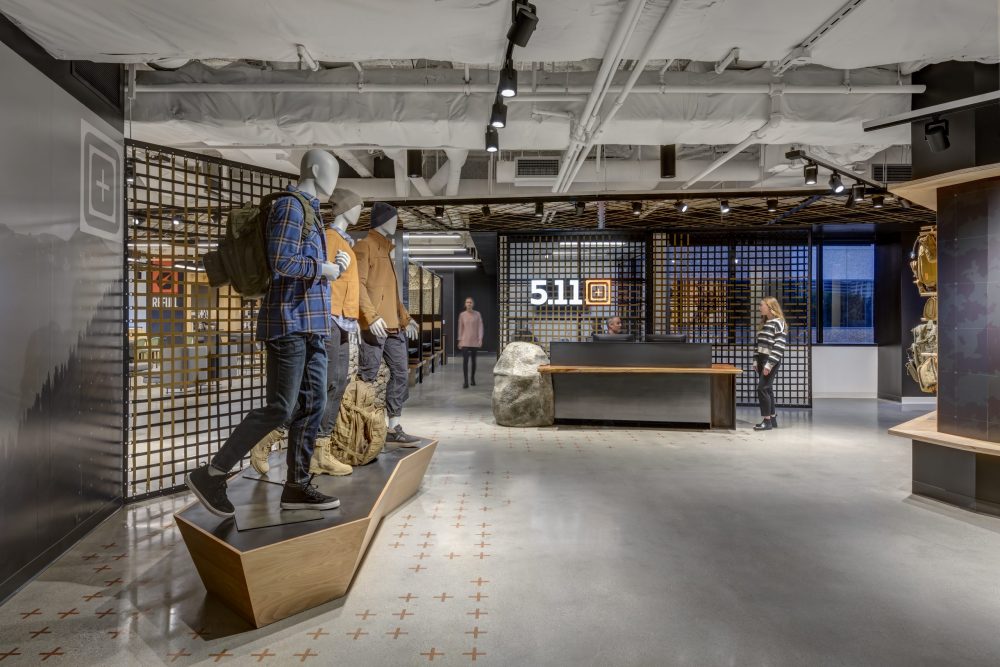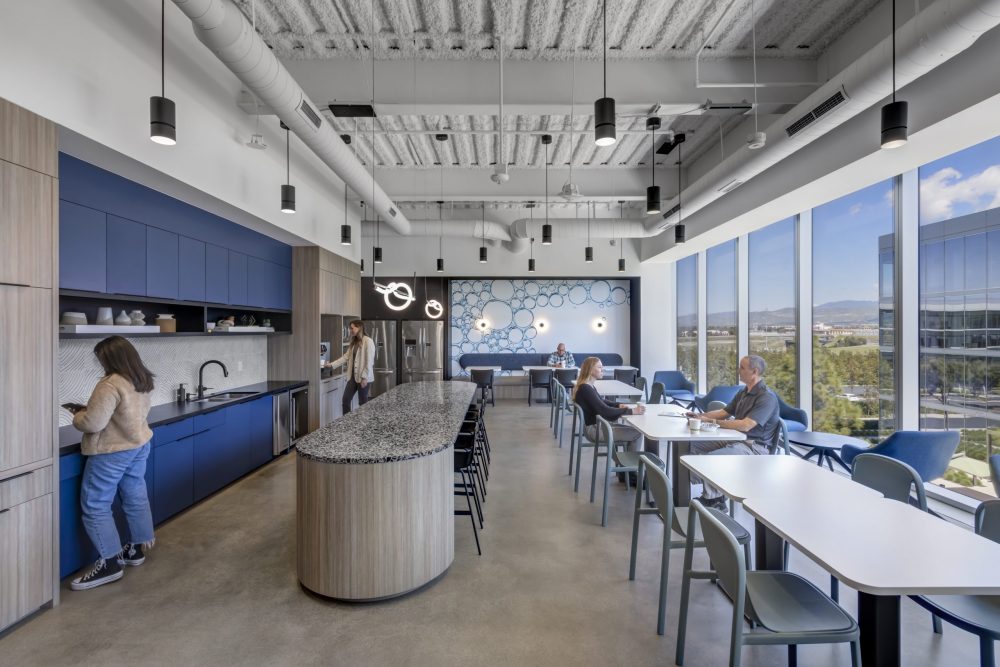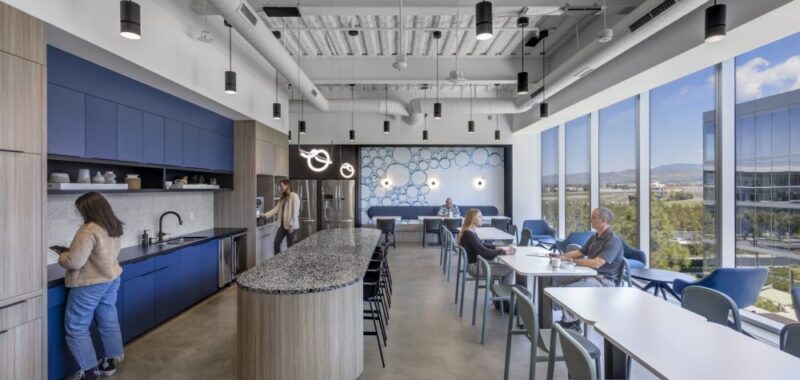Insights from Anna Alm-Grayhek, Director of Workplace Strategy at Hendy, are paving the way for a more intentional return to office which begins with its leaders.
Hybrid strategies are faltering.
Many organizations have recognized the need for a better office experience and are stepping up to the challenge. They are building great places that are full of light, ergonomic furniture, modern amenities, free snacks and flexible workspaces. However, their employees are not returning. What is happening?
If we dive into the details, most people are saying “I don’t want to.” They don’t want to make the commute, they don’t want to waste the gas, they don’t want to get dressed, put on makeup or even take a shower. In the end, they don’t perceive the value this effort may bring.
But of course, sometimes we need to do things because they’re better for us, and better for our colleagues. People may not want to make the commute, but they need to be in the office. It’s like going to the gym or working out. We dread getting up early, putting on workout clothes, tracking down a yoga mat, cleaning a bike or finding a parking spot. We can easily talk ourselves out of not going. But once we do it, we are so happy we did!

Celebrating Social Connections
The same is true of going to the office. We are social beings, and we need that connection to others. So much of our lives have been virtualized; Amazon delivers our groceries, DoorDash delivers our dinner, Starbucks has our coffee made before we walk in the door, and Netflix brings the movie theater right into our bedrooms. It’s no wonder there is an epidemic of loneliness. All of these “conveniences” have removed much of the interaction we have traditionally had with others, especially with those outside of our immediate friend circle. Those opportunities to connect with another human being while standing in line, returning a shopping cart, or asking for a recommendation are the times when we share the human experience together and grow our empathy for those around us.
The same holds true for interactions at work. Virtualization has removed many opportunities for water cooler talk, spontaneous mentorship or a shared laugh about a TV show. Those connections will bear fruit when it comes to both productivity and overall satisfaction for employees. Considering that the younger workforce has spent their early career in a primarily virtual setting, we are doing them (and the future of our organizations) a disservice by not prioritizing in-person collaboration and connection that foster learning and growth.

What Can Leaders Do?
Short of creating mandates, many of which simply encourage employees to “check the box” and swipe their badge at the office, leaders need to practice what they preach. It’s nearly impossible to get employees to show up at the office if leadership is not also there. By regularly appearing in the office and being an example of the short and long-term benefits of in-person connection and work, organizations can build cultures that celebrate that togetherness.
The goal here is to show employees who are earlier in their careers and remind more tenured team members of the benefits of an intentional in-office experience.
What many organizations may find is that their approach to “showing up” needs a complete refresh.
Taking a step back to understand new ways of working is essential.
This may mean compromising in certain areas where an organization’s previous work schedule was stricter, or trusting employees to make decisions about when and where they work best. Consider how shifting our mentality around hybrid work from in-office “days” to in-office “hours” may impact the team. If traffic is the issue, employees can coordinate with their managers to come into the office later or leave earlier – what’s important is that they’ve done their best work. By becoming problem solvers rather than complainers, leaders can support their team and organizational culture to become the most productive, sustainable and connected version of itself.

Transform Your Company Culture
Ultimately, the most important part of this “workplace transformation” is establishing a company culture that champions the value of the in-office experience and executes it in a way that is sustainable. In Scott Galloway’s book “The Algebra of Wealth: A Simple Formula for Financial Security” he explains that “Early in your career, you need training, mentors, and challenges. A virtual presence can’t replace surrounding yourself with smart, creative humans building something.”
But being in the office isn’t just important for the younger generation of the workforce – without more experienced professionals sharing the same space, there’s a lack of valuable mentors to learn from and connect with. This is also essential when it comes to career development, as “…mentors are the people who become emotionally invested in your success…When deciding who to promote, it’s the person who has the relationship with the decider who will get the nod” (Galloway). On the flip side of this, it’s also understood that remote workers tend to be more likely to get cut when layoffs are necessary.
Communicating the importance of the office, and how its value changes at different stages in our career, is essential for creating a culture that supports the entire team’s growth.
Architects can design the most inspiring, highly functional office spaces, but unless the company is strategically and intentionally showing employees the value of coming together in-person, they simply won’t come.
In-office days will feel burdensome, and it’s unlikely that they will come in if they believe it will be half empty. Bottom line, people generally place their own conveniences first…and what’s more convenient than working from home? We’re oftentimes unwilling to push ourselves beyond what’s comfortable unless the value of the “discomfort” is made clear to us. This remains one of the biggest hurdles for leaders seeking to shift their team to be back in the office, but also provides an essential opportunity.

Creating a functional, welcoming office space that employees will enjoy coming to is the first step, but beyond that, leadership teams must communicate these ideas (and live them out) to start building an engaging, sustainable culture that enhances the team’s day-to-day work experience while also championing their future growth and relationships.
A lot of things can be done virtually, but there is no real substitute for the synergy that happens when people are in the same space together. When you regularly go to the gym, you start to see results. Imagine what our organizations could accomplish if we pushed past the inconveniences and came together to collaborate, teach, and connect.

